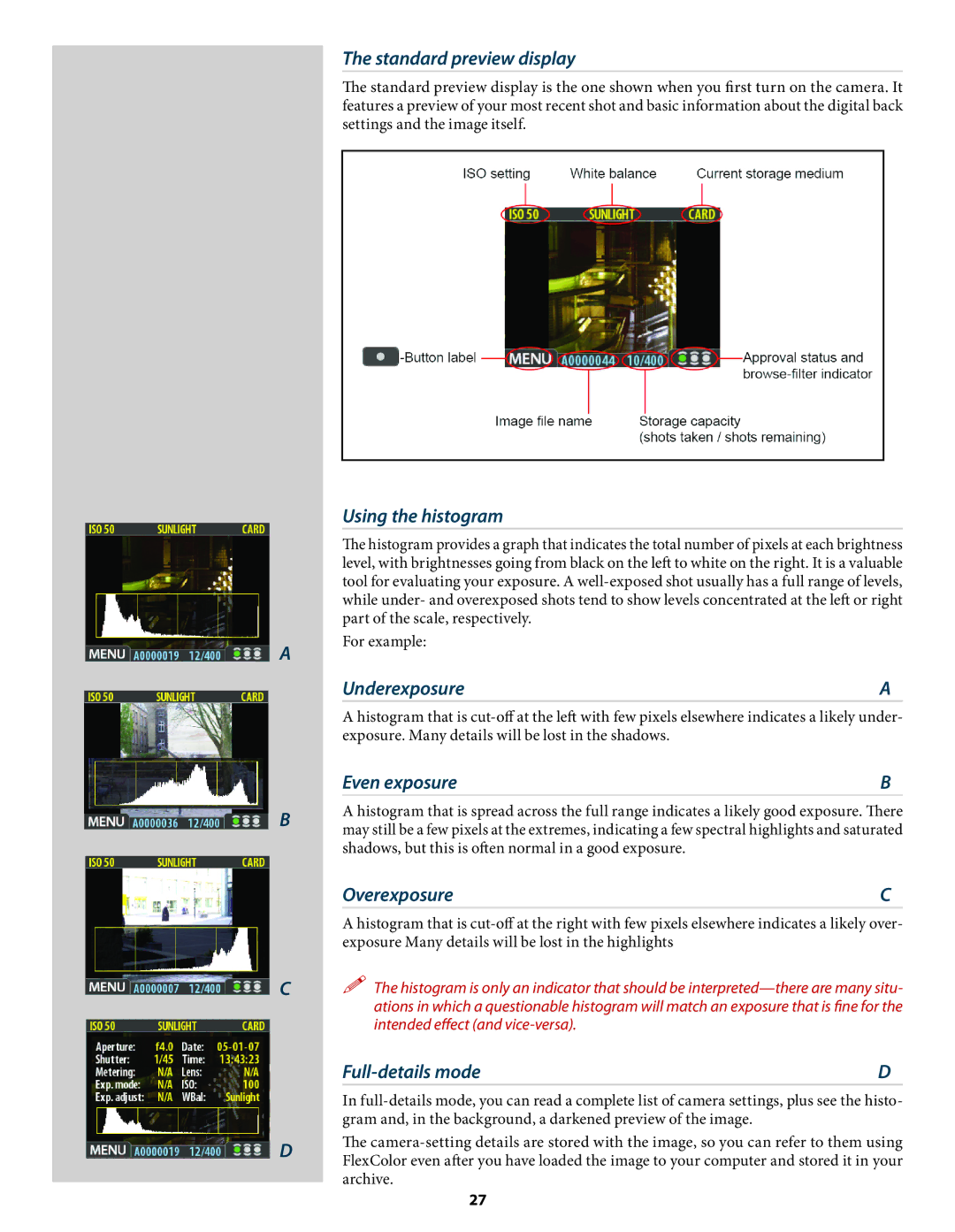
A
The standard preview display
The standard preview display is the one shown when you first turn on the camera. It features a preview of your most recent shot and basic information about the digital back settings and the image itself.
Using the histogram
The histogram provides a graph that indicates the total number of pixels at each brightness level, with brightnesses going from black on the left to white on the right. It is a valuable tool for evaluating your exposure. A
For example:
Underexposure | A |
A histogram that is
Even exposure | B |
BA histogram that is spread across the full range indicates a likely good exposure. There may still be a few pixels at the extremes, indicating a few spectral highlights and saturated shadows, but this is often normal in a good exposure.
Overexposure | C |
A histogram that is
C The histogram is only an indicator that should be
| D |
In
DThe
27
